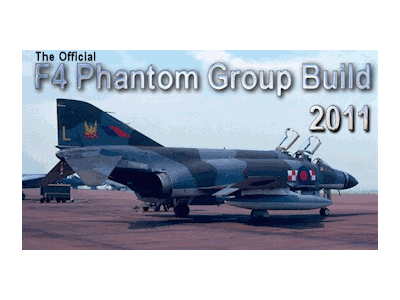Revell Customer SUpport...
Hi folks. I hope you are all enjoying the week. I am writing this to see if anyone els ehas had a similar experience to one I am having now with Revell Customer Support.
It started about a week and a half ago, when I was woring on one of their F-4C 1/48 scale Phantom kits. I spent about three days detailing the cockpit, and then when it was time for assembly, the problem occurred. Whel I install sub assemblies, I like to use CA glue because of it's strength, it's speed in setting, and the fact that it's easier to remove a piece that was assembled using it, than other types of glue. My favorites are Great Planes CA Medium thickness. I had installed the cockpit into one half of the fuselage, and let it completely cure over night. The next afternoon I sat down at my bench and attempted to put on the other fuselage half. It was then that I discovered that one half of the fuselage was a slight bit smaller than the other... BIG problem...
I contacted Revell and ordered two fuselage halves to replace the defective ones. I had to order both halves because it was impossible to figure out which one was the wrong size. After some discussion with their support people, they sent me the halves. Fast Forward a week.
A couple of days ago the replacements arrived and I sat down to remove the cockpit from the old fuselage. I applied a few drops of debonder, expecting it to release the CA as it did with any other parts I ever used it on.
What happened was that the debonder had some kind of reaction with the plastic, or vica verse, and it turned the side of the cockpit to mush. It was totally destroyed. I did a few test patches on some old spare landing gear doors I had floating around, glueing them and debonding them. None of them had the bad reaction, so it wasn't the Glue or Debonder.
Okay, so I contacted the good people at Revell again. after going around for a couple of days, they now want me to pay $10 to get the replacement parts that I need because of their bad plastic and malformed kit...
I just emailed them to politely express my opinion on trying to charge someone for something that was basically their fault to begin with. I am waiting for their reply..
Rich
In the Hangar: 1/48 Hobby Boss F/A-18D RAAF Hornet,
On the Tarmac: F4U-1D RNZAF Corsair 1/48 Scale.